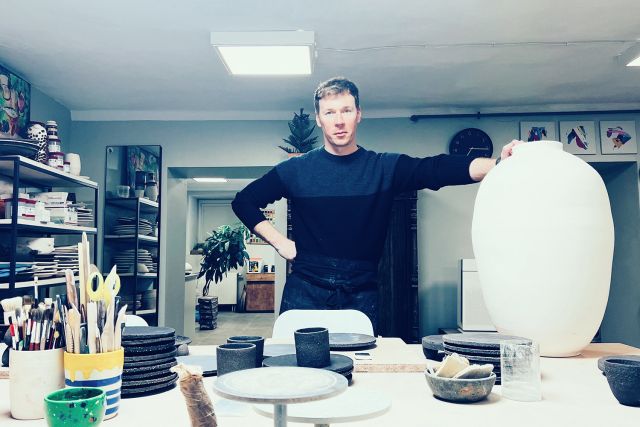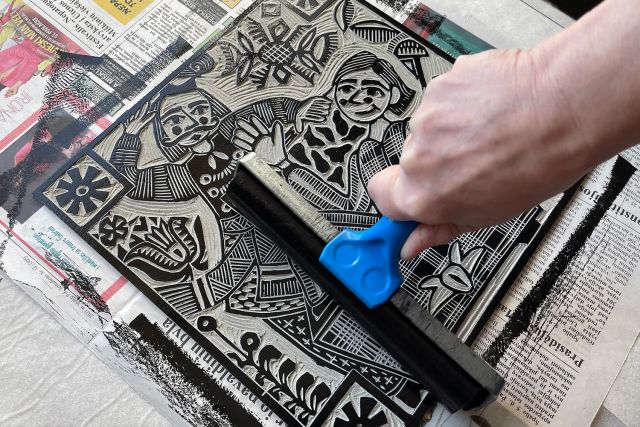This is a reconstruction of a 5th century women's belt. It is a decorative light brown leather belt with a gilded silver buckle. An interesting feature is that the buckle plating is made from a sword scabbard decoration.
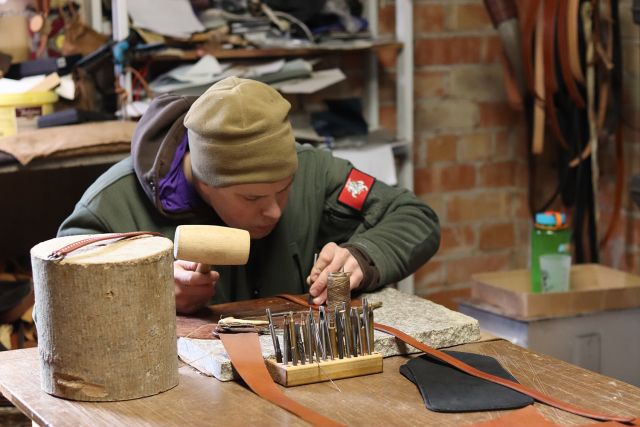
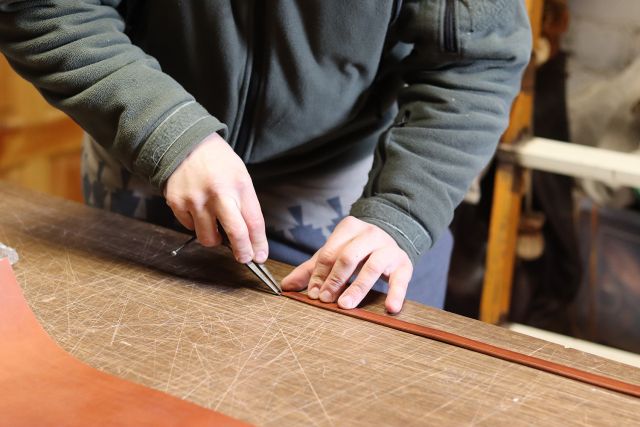
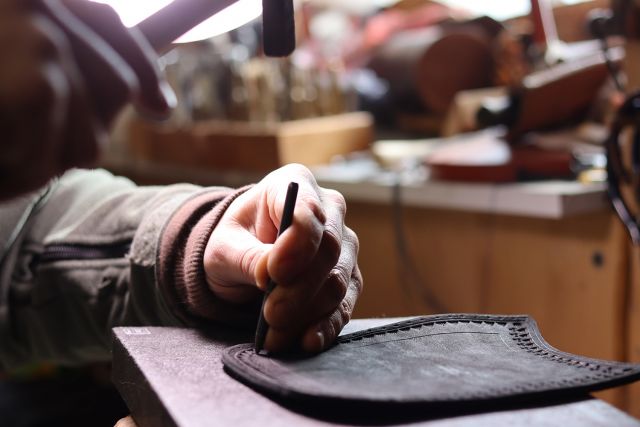
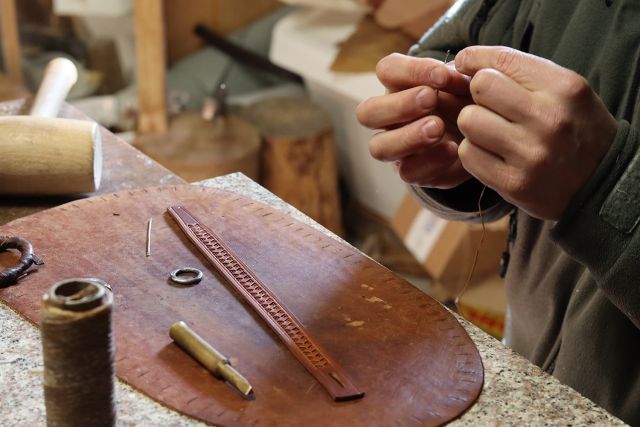
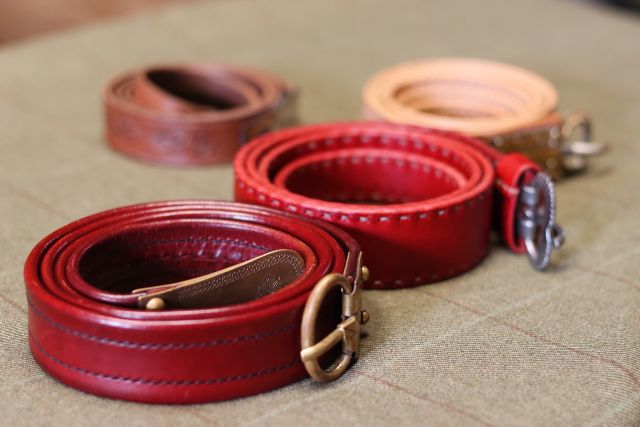
Martynas Švedas
- Balticleather
- Leatherworker
- Didžioji Riešė, Lithuania
- Rising Star
By appointment only
+370 61674136
A pouch maker immersed in history
- • Martynas makes leather pouches that feature in historical re-enactments
- • Leather captivated him from the first touch
- • Everything in his life is inspired by the past: music, battle re-enactments and leatherwork
Martynas Švedas studied biology, but his passion for history triumphed in defining him. Fully immersed in ancient times, Martynas plays and sings in a Baltic music band and has been involved in martial fraternities since he was a teenager. This is where battles of the past are re-enacted and why he had no choice but to learn the craft of leatherworking. He makes traditional belts and pouches from leather, using information from books and historical data, to produce items fit for re-enactments which aim to be historically accurate. Creativity and history are both important in Martynas' work. It is not enough to copy. "The most accurate description of my approach would be that it is an artistic expression based on history and archaeology," says the artisan who calls himself a pouch maker.
Read the full interviewWorks
Photo: ©Jurgita Ludaviciene

Photo: ©Jurgita Ludaviciene
This is a traditional light brown leather belt pouch, designed on the basis of historical data, but adapted to today's dimensions and functions. It is decorated with an archaic ornamental strip of triangles and circles.

Photo: ©Jurgita Ludaviciene
This handbag is based on surviving historical iconography. The decoration is typical of handbags of the 11th-13th centuries. In red-brown soft leather with a yellow band, it has two symmetrical geometric ornaments on the front.

Photo: ©Jurgita Ludaviciene
This knife sheath is based on a 10th century find from Vilkiautinis grave site in Lithuania. The sheath has a wooden core, is made of brown leather, and is decorated with a geometric triangular ornament. It comes from the Baltic tribe called the Yotving.

Photo: ©Jurgita Ludaviciene
This is a small pouch based on a Roman find from the 2nd century, made of light brown leather, with a thin dark brown leather strap at the top. It is stitched with a simple stitch in light-coloured linen thread.






